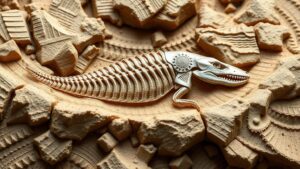Mining First-Person Accounts of Explorers for Leads on Lost Cities
Mining First-Person Accounts of Explorers for Leads on Lost Cities
Exploration has played a pivotal role in human history, unveiling not only new territories but also offering insights into the vanished civilizations that once thrived in those regions. The purpose of this research article is to examine the first-person accounts of explorers as a valuable resource for identifying potential leads on lost cities. By analyzing these narratives, we can gain actionable insights into the geographical, cultural, and technological contexts of historical civilizations.
The Importance of First-Person Accounts
First-person accounts, also known as autobiographical narratives or travelogues, are crucial for reconstructing historical events and understanding cultures that may not have left substantial written records. Scholars in fields such as archaeology and history often utilize these narratives to form hypotheses about lost cities. For example, explorer Hiram Binghams discovery of Machu Picchu in 1911 was heavily influenced by local accounts of a lost city that had been obscured by time.
- Hiram Binghams reports, such as those published in his book Lost City of the Incas, highlighted intricate social structures and urban planning.
- The detailed illustrations and descriptions provided by Bingham and his contemporaries serve as critical evidence supporting the existence of substantial Incan civilization.
Methodology for Analyzing Accounts
To effectively mine first-person accounts for information about lost cities, researchers can follow a systematic methodology involving several key steps:
- Textual Analysis: Researchers analyze narratives for geographical descriptions, cultural artifacts, and references to architectural styles.
- Cross-Referencing: Comparison of accounts with known archaeological sites enhances credibility and sheds light on possible locations of lost cities.
- Environmental Contextualization: Understanding the ecological dynamics of described landscapes aids in reconstructing past human activities.
Case Studies of Successful Leads
Several high-profile discoveries of lost cities have resulted from diligent mining of explorers accounts:
- Cahokia: The unique earthen mounds described by pioneer explorers helped archaeologists place Cahokia as a pre-Columbian urban center near modern-day St. Louis, Missouri. Historical accounts detail massive structures used for ceremonial purposes.
- El Dorado: Explorers like Sir Walter Raleigh documented their quests for the legendary city of gold in the early 17th century, focusing on indigenous accounts that hinted at affluent towns. Though the city was never found, Raleighs narratives ignited significant interest in South America and led to further exploration.
Key Challenges in Interpretation
While first-person accounts are undeniably valuable, they present challenges that must be acknowledged:
- Subjectivity: Explorers perspectives can be biased or sensationalized, leading to misinterpretations. This is evident in the exaggerated tales of vast wealth in indigenous civilizations that motivated European conquest.
- Temporal Disconnect: Changes in landscapes, cultures, and languages over time complicate the accuracy of descriptions, requiring careful contextual interpretations.
Implications for Contemporary Archaeology
The integration of explorers accounts into archaeological research has significant implications for modern practices. By drawing on historical narratives, archaeologists can:
- Identify unexplored regions that may harbor ruins of lost cities.
- Develop targeted excavation strategies informed by specific geographic or cultural details found within explorative tales.
- Foster collaborations with indigenous communities, utilizing their oral histories alongside explorers accounts to create a more holistic understanding of past societies.
Conclusion
To wrap up, mining first-person accounts of explorers provides a unique vantage point for uncovering lost cities and understanding the civilizations that built them. Although potential biases and temporal variances pose challenges, the integration of these narratives offers an invaluable resource for archaeological discovery and cultural preservation. Future research should continue to refine techniques for analyzing these texts and actively incorporate indigenous perspectives to enrich our understanding of historical and cultural contexts.
By recognizing the enduring legacy of explorers accounts, we can not only enhance our archaeological investigations but also celebrate the stories of the civilizations that shaped our world.



